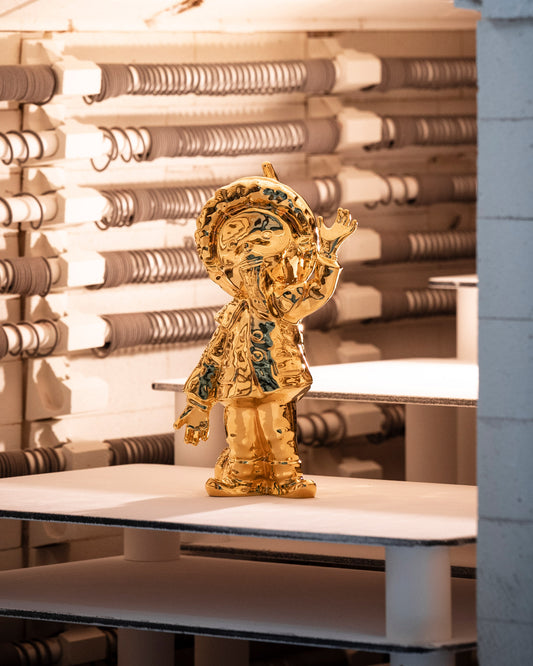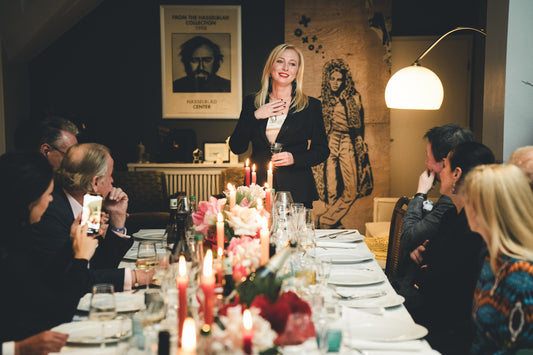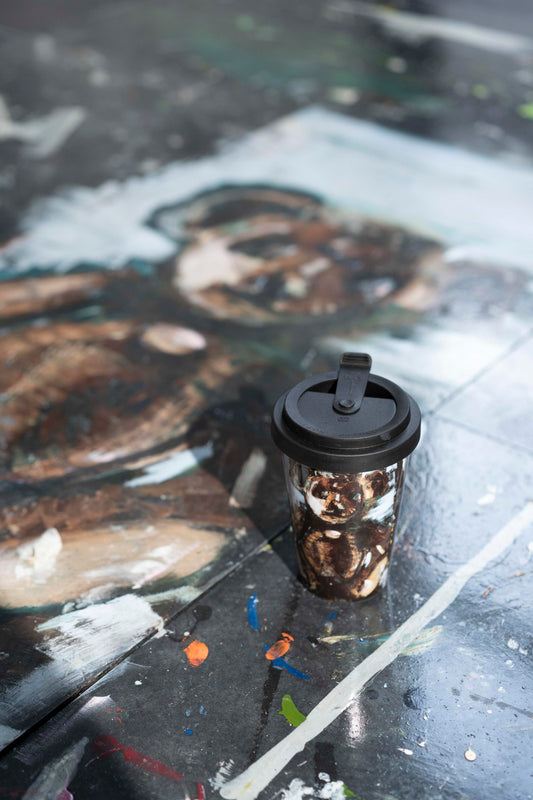MANDORLA DESIGNER IN INTERVIEW
KPM is launching the new MANDORLA collection as a daily and as an art edition. We interviewed the two minds behind the novelty. A conversation with the artist Reiner Xaver Sedelmeier and KPM chief designer Thomas Wenzel.
Mr. Sedelmeier, what is it about the mandorla shape that particularly fascinates you?
RXS: On the one hand, it is the pure aesthetics, both of the individual mandorlas and of the all-over arrangement. This becomes a fashionable pattern with a floral look! On the other hand, the Mandorla is part of a design that is usually used as a floor or mudguard on construction sites, for example. And I think it deserves more. Basically, I enjoy recharging and reinterpreting objects, materials and items by removing them from their actual purpose and thus freeing them from their pure functionality.
How did the jump from metal to porcelain go?
TW: I had been thinking about products that could provide relief for a while. And Reiner's industrial derivation works wonderfully for this relief; a border wouldn't work there. A film immediately played on my inner screen in which it became clear: MANDORLA fits our collections and yet does not compete with the existing products.
RXS: This 'stupid' floor plate is actually lying on the floor of a construction site somewhere. But simply transferring this to porcelain doesn't work; it requires an intermediate step, and in this case that is my furniture. For example, the lounger, where I actually only raised the material 30 centimeters. When viewers look at the objects, they think: I know that from somewhere! And then the penny drops.
Many people also know the term from a completely different context, traditional iconography.
RXS: Yes, mandorla is a technical term from art history and describes a glory or aura surrounding an entire figure. This is different from the halo, which only surrounds the head. Mandorls are interpreted as a visible expression of the light, healing and protective power of a figure. Which, funnily enough, leads back to the mudguard, which has the same function. Protection is a big issue, we want protection but at the end of the day we rarely get it and that's exactly what the china says.
The designers of Mandorla: Reiner Xaver Sedelmeier and Thomas Wenzel
The vase is almost 30 cm high
The jug measures a good 27 cm, the cups a good 10
So in the end, this is about a transformational achievement?
RXS: Exactly. About creating a contrast between the protective sheet steel and the fragility of the porcelain. The only thing I can provide is the thought, the idea. Without the expertise of the manufacturer, the implementation would not be conceivable at all; it is incredibly nice to see the development process and effort that goes into an object. This know-how and the overwhelming history... The fact that a company with such a history is implementing such a contemporary approach is great.
You chose a cylindrical basic shape, why?
TW: Steel is traditionally rolled, so the starting point for me was clearly the cylinder, or in other words: the tube. As a 1:1 translation of the derivation in which a material becomes a product. The viewer can then associate the tear plate in a self-experienced way. The fact that we chose bisque porcelain as a material emphasizes the sharpness and accuracy and the tactile experience of the unglazed surface.
Mandorla is being launched as a permanent new collection by KPM Berlin and as a limited art edition. What differentiates the variants?
RXS: It is the refinement that takes place here (and often in my other work) through surface application: metallic silver and gold, sometimes real gold, but also neon nuances in pink, orange, yellow…. Depending on the incidence of light, the colors change and the reflections form a radiant shell around the actual mandorla. Which in a certain way creates a very special aura.
Which product from the collection do you like best?
RXS: My favorite product is the cup because it also has the feel. You take it in your hand and feel the structure - which you otherwise only enter with shoes.
TW: For me it would be the vase. I find it formally very consistent in the context. It is precisely the uncompromising derivation from a consistent, geometric industrial form that makes it a modern but timeless sculpture. She combines this arc of tension perfectly.
Transformation, industry, art and manufacturing explore the crossing of boundaries, of what is conceivably possible, in an exciting way. A familiar “irritation” of viewing habits keeps an inner dialogue so alive.
The relief (worked out using the casting process) lies in the user’s hand
The MANDORLA collection
Photos: Simone Schneider


